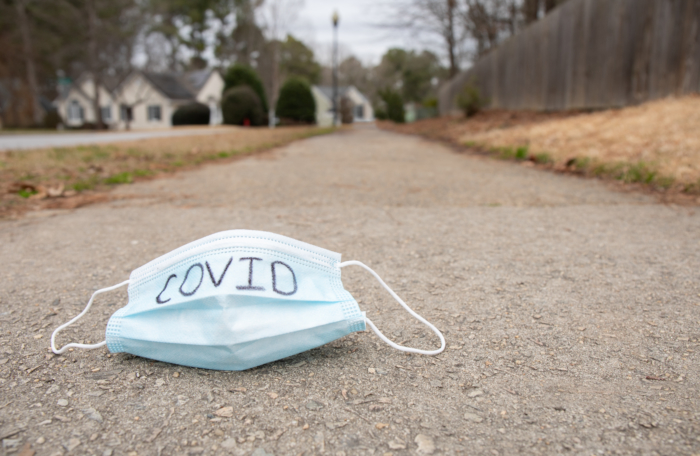Vaccinations killed the mask mandate, and now show the way forward
Gov. Chris Sununu lifted the state’s mask mandate on April 16, and much hand-wringing ensued. And scolding. And partisan attacks.
New Hampshire Public Radio noted, with apparent worry, that the hospitalization rate was higher than it was when the mandate was issued last November.
State Democratic Party Chairman Ray Buckley tweeted, “When Republicans get elected, people die.”
A University of New Hampshire poll released April 21 found that 43% of Granite Staters supported lifting the mandate, while 48% opposed.
But the data support the governor’s decision.
If a statewide mask mandate had been justified to preserve hospital capacity and limit deaths through the winter, that justification receded with the rest of the second wave. The numbers just don’t support the continuation of an emergency order commanding people to wear masks when outside and in public spaces.
Keep in mind that the state mandate was of its highest utility primarily in outdoor public spaces (where infection risk is extremely low) and in indoor places of public accommodation where business owners were not already requiring masks (which was a small minority of businesses).
On November 19, when the governor issued the mandate, new cases had been rising for three months, and rising sharply for several weeks. Confirmed hospitalizations were rapidly approaching their spring peak. Signs were that the expected second wave was on its way.
By April 15, when Sununu announced that the mandate would not be extended, the second wave — never as severe as feared — had long since subsided.
There were 108 hospitalizations on November 19 when the mandate was issued. There were 132 on April 15, when the governor announced the mandate wold be lifted. There were 112 on April 23, a week after the mandate was lifted.
Throughout the pandemic, the state prepared to manage 1,000 hospitalized COVID-19 patients. We never approached that number. The highest daily count was 334 on January 1.
There is no shortage of hospital beds or ICU beds in the state.
Deaths, the most important metric, have plummeted since January.
Deaths peaked at a seven-day average of 11.7 on December 26. They hit a seven-day average of 11.6 on January 7. Since then, they have fallen dramatically.
The seven-day average was two on March 5 and has been below that ever since. It stood at 1.1 on April 15. It was at 1 on April 18, the last day for which the state has posted data.
Switching from masks to vaccines
Without a vaccine, COVID-19 cases were a more important metric. With a vaccine, deaths is the most important metric, with hospitalizations second. Vaccination dramatically reduces both of those outcomes, as New Hampshire’s data show. As vaccinations have risen, deaths have plummeted and hospitalizations have fallen sharply.
Remember “flatten the curve?” The point of state interventions all along has been to preserve hospital capacity and prevent mass deaths. It was never to prevent all hospitalizations and all deaths, impossible tasks.
Before a vaccine was available, the state had only very crude tools with which to try to accomplish its goals. Mask mandates, travel restrictions and business closures were the tools at hand, and states used them.
The vaccine is a far more powerful tool for achieving the same ends. That’s why the governor has shifted the focus away from crude restrictions on behaviors to the encouragement of widespread vaccination.
Ending the mandate doesn’t immediately end masking. Businesses and municipalities may continue to maintain their own policies as we move toward ever higher vaccination rates. What it does is encourage vaccination in two important ways.
- It shows people the connection between vaccination and the end of emergency restrictions such as mask mandates.
- It demonstrates faith in individuals to make their own decisions, which builds good will and trust, the shortage of which has made fighting COVID-19 more challenging than it should have been.
The focus on vaccination, with top priority given to the elderly, already has paid tremendous dividends. New Hampshire was the first New England state to make half of its population eligible for the vaccine. It now leads the nation in the percentage of adults who have received a first dose, at more than 70%.
The results are so remarkable that on April 23, Andy Slavitt, White House senior advisor for COVID response, tweeted high praise for New Hampshire:
8 states have now vaccinated more than 60% of adults with a first shot.
New Hampshire (>70%!)
CT
Mass
NM
Maine
NJ
VT
Hawaii
All of them have turned the corner on the number of cases & hospitalizations.
Well done. Let’s all get there.
We will get there, but not by giving people a disincentive to vaccinate, which is what prolonged mask mandates do. We will get there by encouraging vaccination and showing how it paves the path back to normalcy.
As Derek Thompson of The Atlantic wrote this week,” as more and more of the population is vaccinated, governments need to give Americans an off-ramp to the post-pandemic world.”
Showing people that they can trade masks for vaccines does this.



